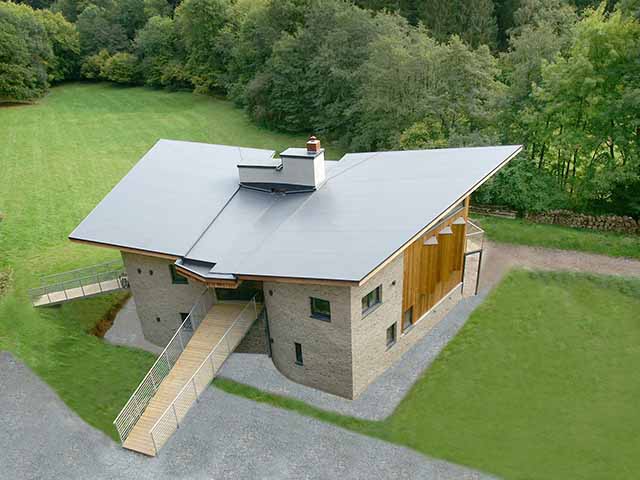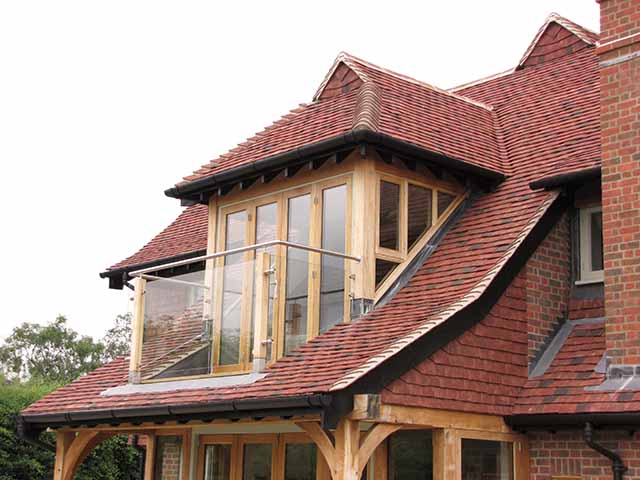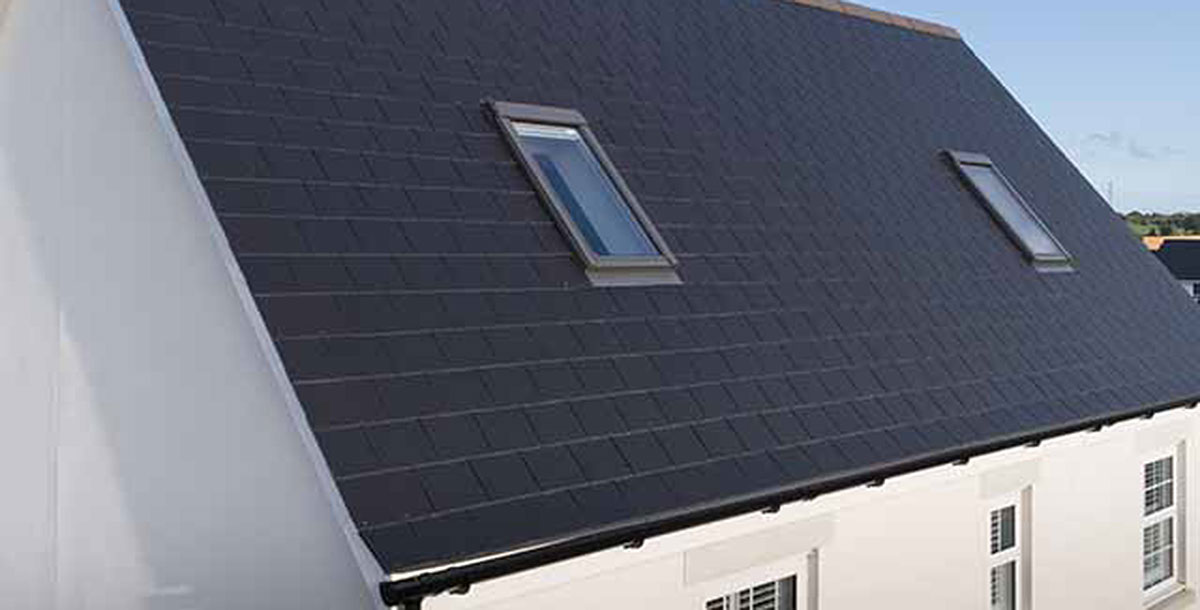4 Bespoke mix
These tiles complement the oak cladding used on this project by Spratley & Partners. No two are the same. Each individual tile is sandfaced, shaped, trimmed and has nail holes inserted. ‘There’s always a balance to be struck between cost and the overall aesthetic of a new-build. But as roof tiles represent a small proportion of the total cost choose the best you can afford,’ says Paul John Lythgoe, managing director at Tudor Roof Tiles.

Handmade clay roof tiles in Sussex Brown and Sussex Red, Tudor Roof Tiles
5 Classic curves
This interlocking clay pantile is easy to lay. The classic S-shape profile is suitable for traditional builds with roof pitches as low as 12.5 degrees.

Clay single interlocking pantile, Marley Eternit.
6 Sleek finish
Blue clay tiles give a metallic look to this project by Adrian James Architects. The shade variations are produced in the kiln where the iron content converts to the blue hue. Texture is also important. ‘Smoothfaced tiles have clean, sharp lines. They are ideal for modern builds. A sandface tile has a softer look and takes on an aged and weathered appearance,’ says Alex Patrick-Smith, managing director at Dreadnought Tiles.

Staffordshire Blue smoothfaced clay tiles, Dreadnought Tiles.
7 Seamless protection
The span of this low-profile, wing roof is covered with a high-performance, single-ply waterproof membrane. It won’t expand or contract. A flat roof of bituminous material has a lifespan of between 8-12 years. Single-ply PVC membranes last around 40 years.

Sarnafil self-adhered single ply membrane in Lead Grey, Roof Assured.
8 Metal effect
A fleece-backed, synthetic waterproof single membrane has an eye-catching lead metal-effect with standing seam effect profiles. The covering has impressive thermal properties and long-term reliability. It protects a home effectively for many years.

Alwitra Evalon V single-ply membrane in Slate Grey, ICB Waterproofing.
9 Living layer
Boost your home’s eco credentials with a green roof. This bespoke 600sqm design is sedum with a shallow expanse of low growing plants. Curving powder-coated aluminium trims retain the planting.

Bespoke sedum roof, Sky Garden
10 Natural patina
A metal barrel shape is a bold statement on this contemporary self-build by Porteous Architecture. On-site installation with standing seam copper panels in a mill finish. It has a mellow patina in a characteristic blue/green finish.

Copper roof by ADM Roofing on a new build project by Porteous Architects
Maintaining a green roof
Tips on choosing plants and keeping them healthy from Russell Hartwell, business development manager at Sky Garden
Sedum vegetation provides an evergreen covering that helps blend a home into green belt land or picturesque surroundings. The most common green roof is an extensive system. This uses a mix of sedum species laid as a pre-grown blanket onto a shallow substrate. It’s sustainable and requires little maintenance.
Irrigation of a sedum roof is only necessary after installation until the plants are established. Subsequently, you may only need to water in exceptionally dry periods.
Waterproofing is protected by drainage and filtration base layers. This can extend the life of waterproofing by up to three times, as exposure to harmful UV rays and extremes in temperature is less of an issue. Green roofs are also increasingly used to mitigate drainage problems at ground level. With more extreme rainfall, a green roof can re-transpirate approximately 50 per cent of average rainfall back into the atmosphere. It slows the rate of storm-water run-off compared to a bare roof.
Wildlife and biodiversity will benefit from a barren space becoming a living habitat.
For more Grand Designs homes and self build inspiration, Read the magazine digital edition for free.
RELATED ARTICLES



















